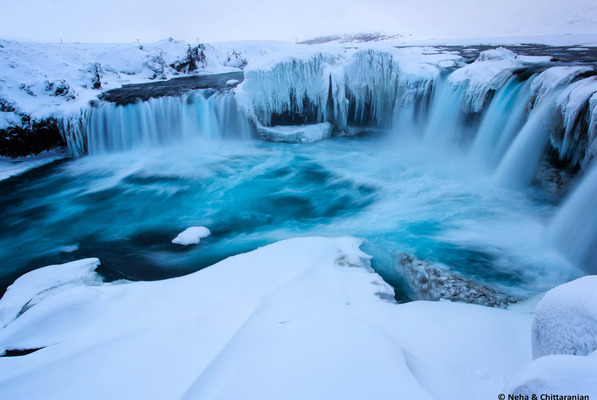When I think about awesome places to visit, Iceland is definitely in my top 5. And here's one more reason why: Mýrdalsjökull, Icelandic for mire dale glacier or (the) mire valley glacier, is, as you can tell, a glacier in the south of Iceland. It is to the north of Vík í Mýrdal and to the east of the smaller glacier Eyjafjallajökull. Between these two glaciers there is also the Fimmvörðuháls pass. Its peak reaches 1,493 m (4,898 ft) in height and in 1980 it covered an area of 595 km2 (230 sq mi). The icecap of the glacier covers an active volcano called Katla. The caldera of the volcano has a diameter of 10 km (6 mi) and the volcano erupts usually every 40–80 years. The last eruption took place in 1918. Scientists are actively monitoring the volcano, particularly after the eruption of nearby Eyjafjallajökull began in April 2010. Since the year 930, 16 eruptions have been documented.
Before the Hringvegur (the main ring road round the island) was built, people feared traversing the plains in front of the volcano because of the frequent jökulhlaups (glacial floods) and the deep rivers to be crossed, although the road is still vulnerable to major events. Especially dangerous was the glacial flood after the eruption of 1918 when the coastline was extended by 5 km (3.1 mi) by laharic flood deposits.
Mýrdalsjökull is an exceedingly wet location, receiving more than 10 metres of precipitation annually.
Before the Hringvegur (the main ring road round the island) was built, people feared traversing the plains in front of the volcano because of the frequent jökulhlaups (glacial floods) and the deep rivers to be crossed, although the road is still vulnerable to major events. Especially dangerous was the glacial flood after the eruption of 1918 when the coastline was extended by 5 km (3.1 mi) by laharic flood deposits.
Mýrdalsjökull is an exceedingly wet location, receiving more than 10 metres of precipitation annually.
~Ally

 RSS Feed
RSS Feed